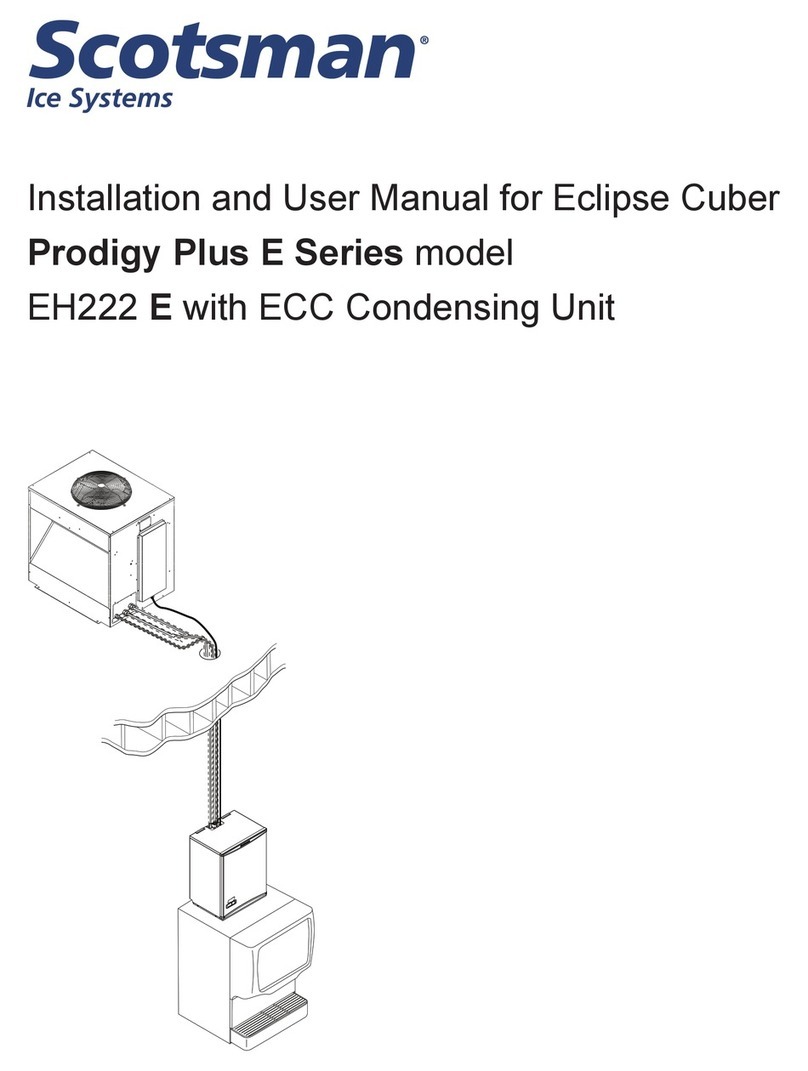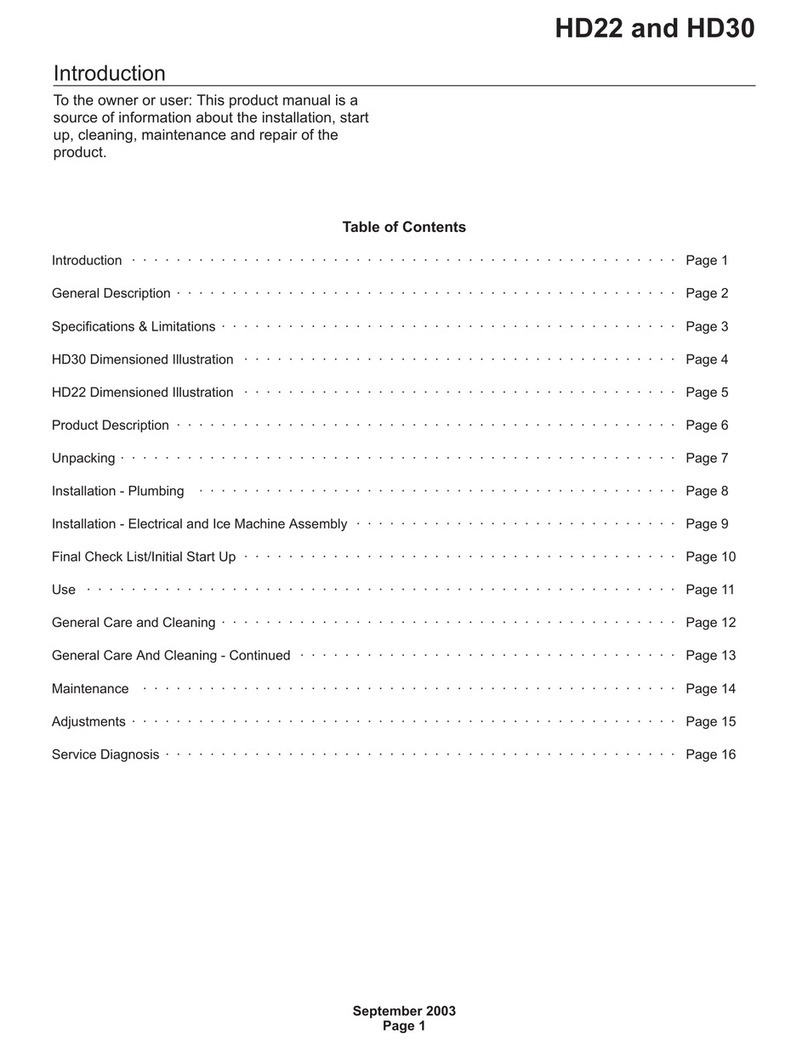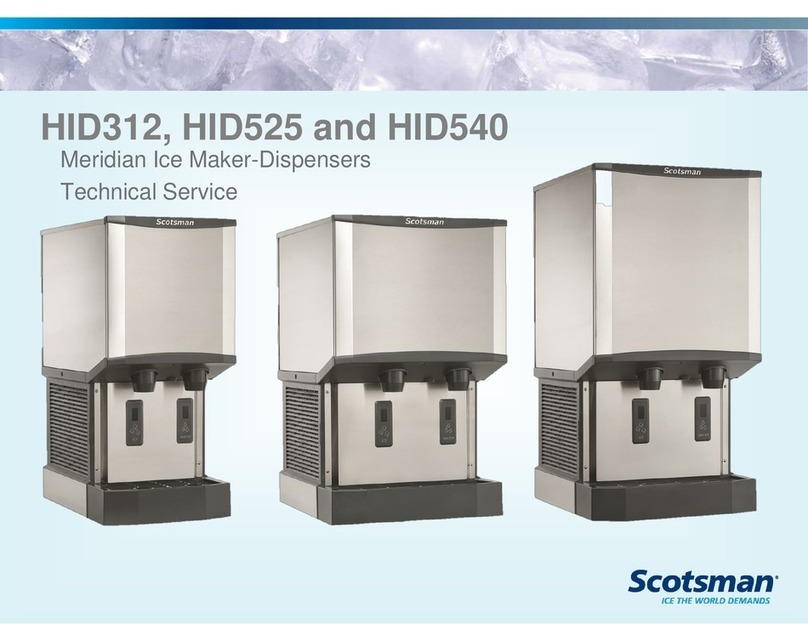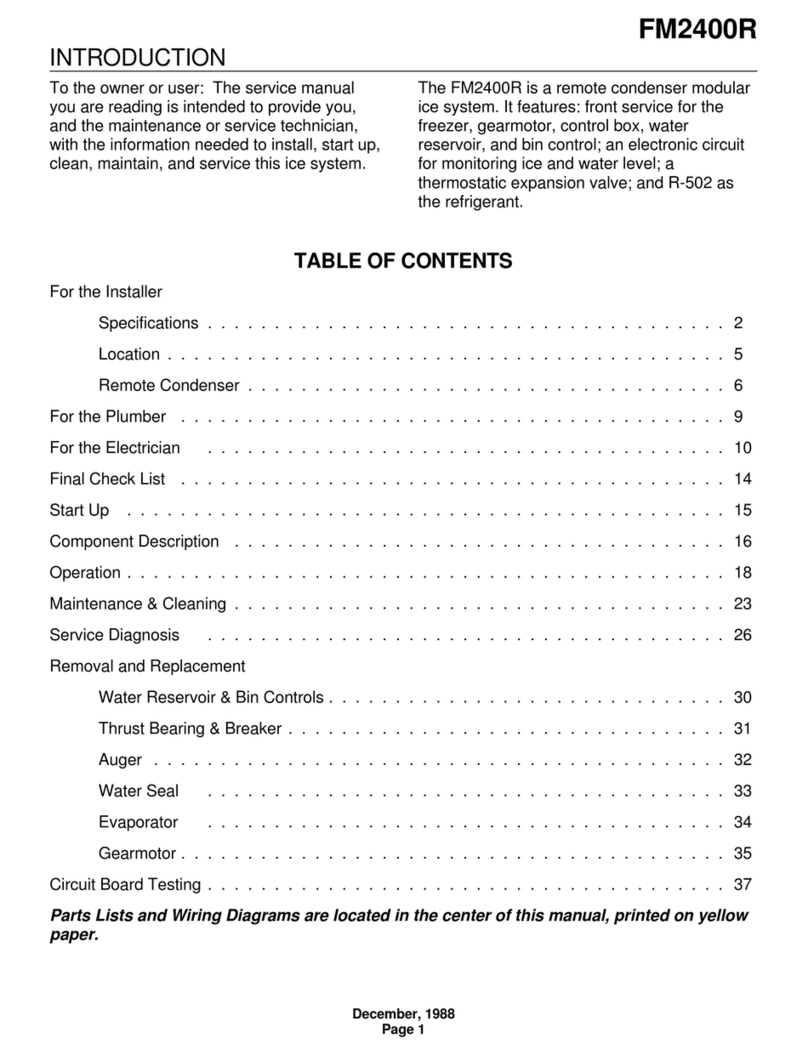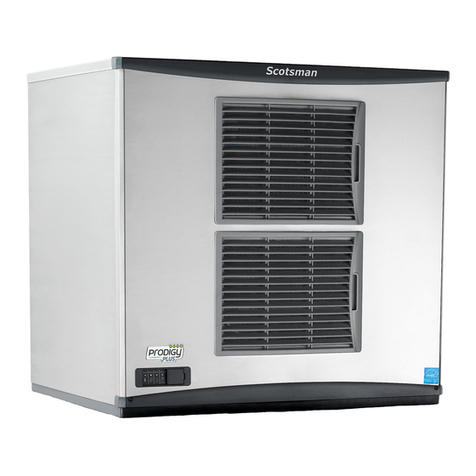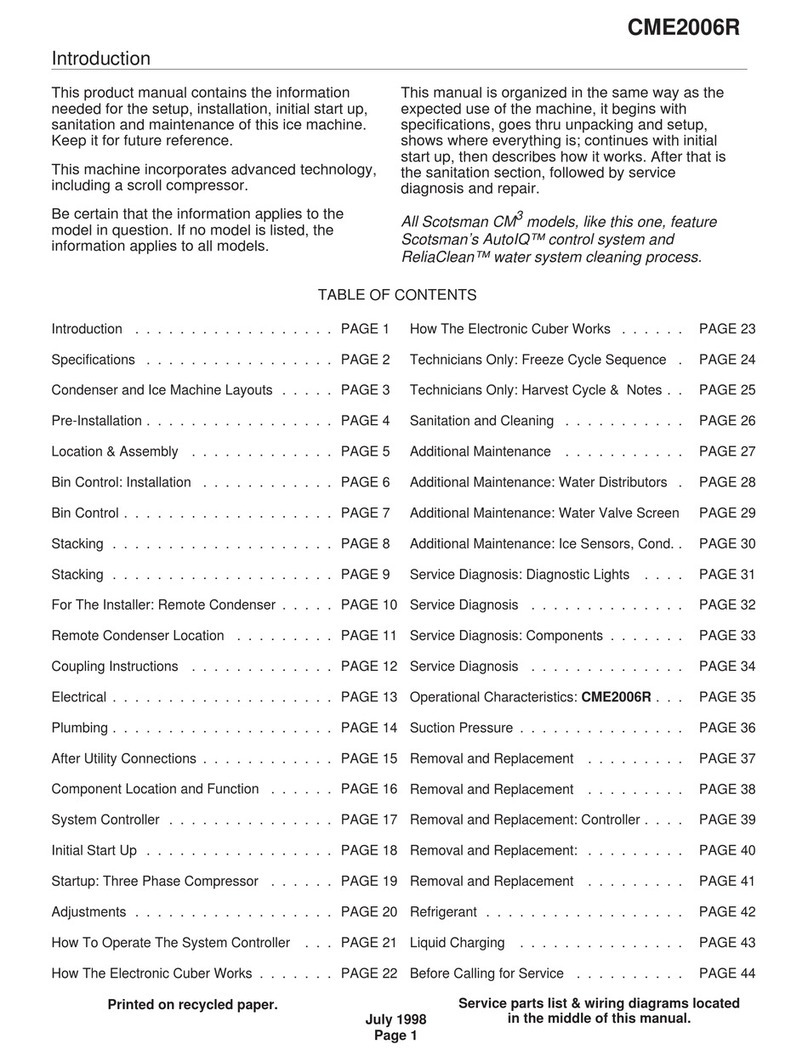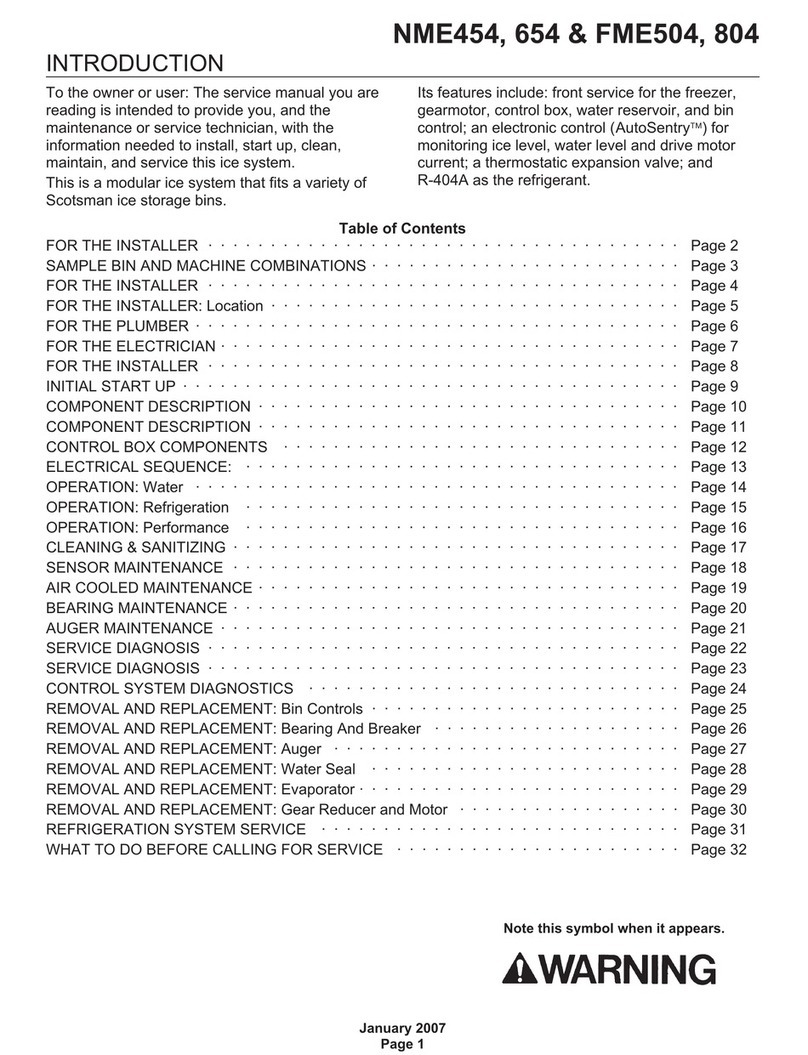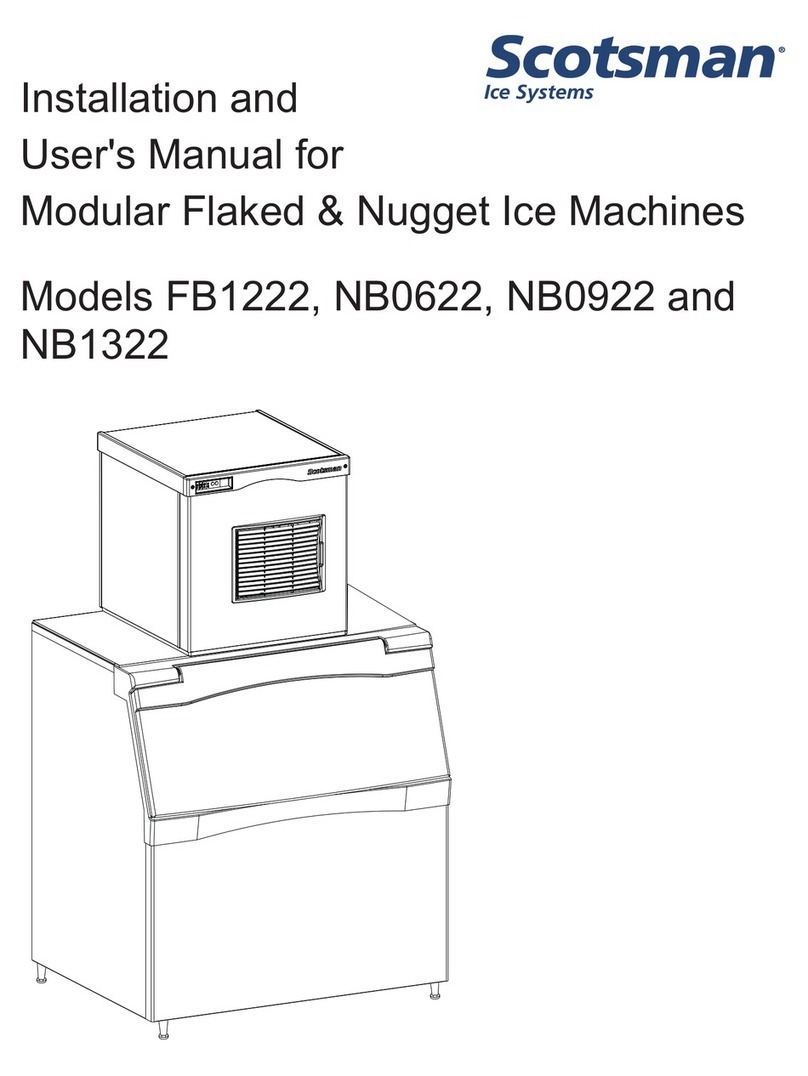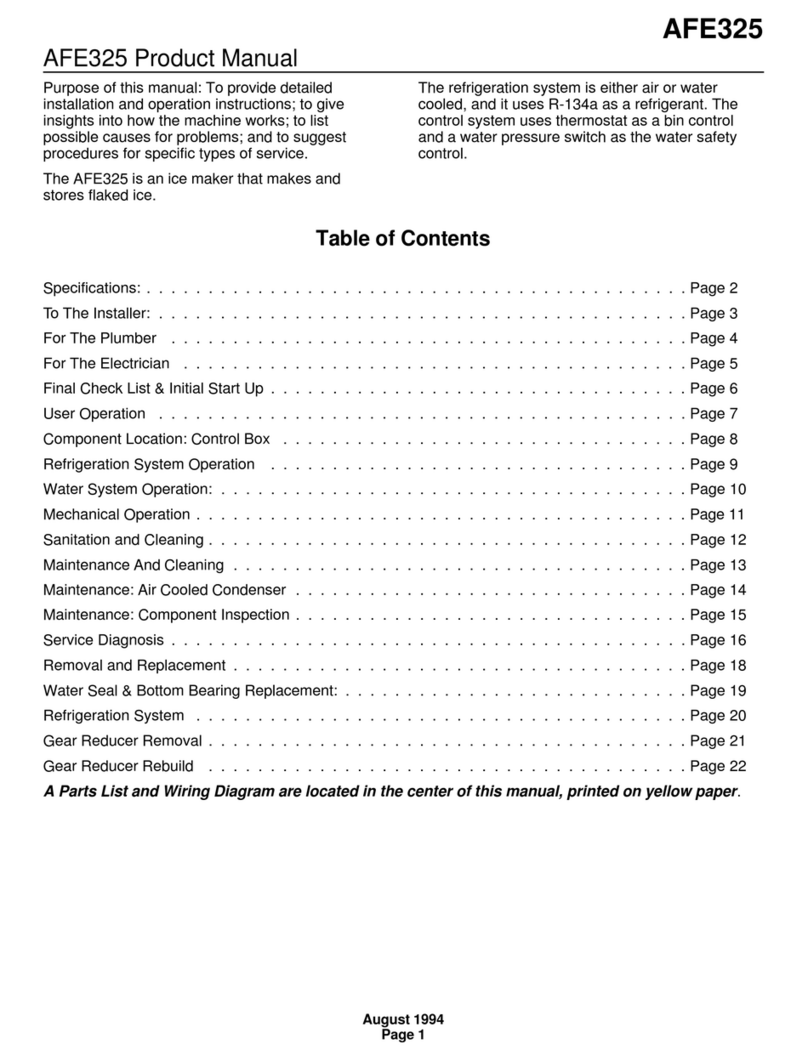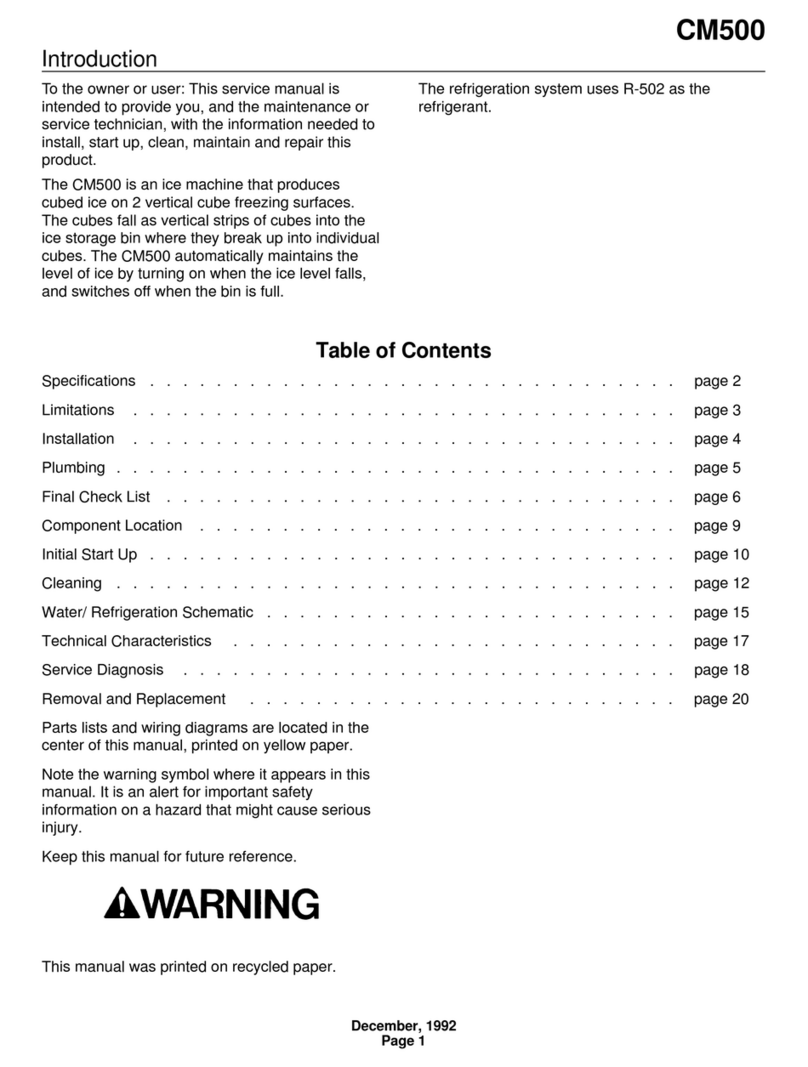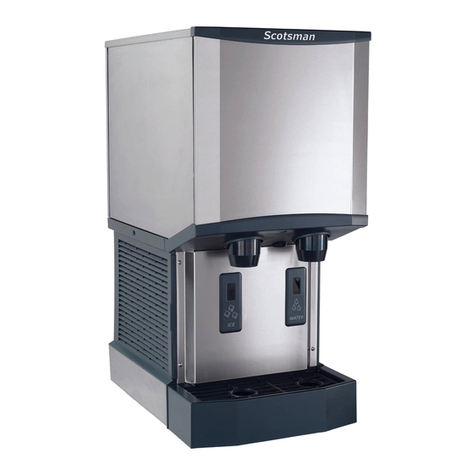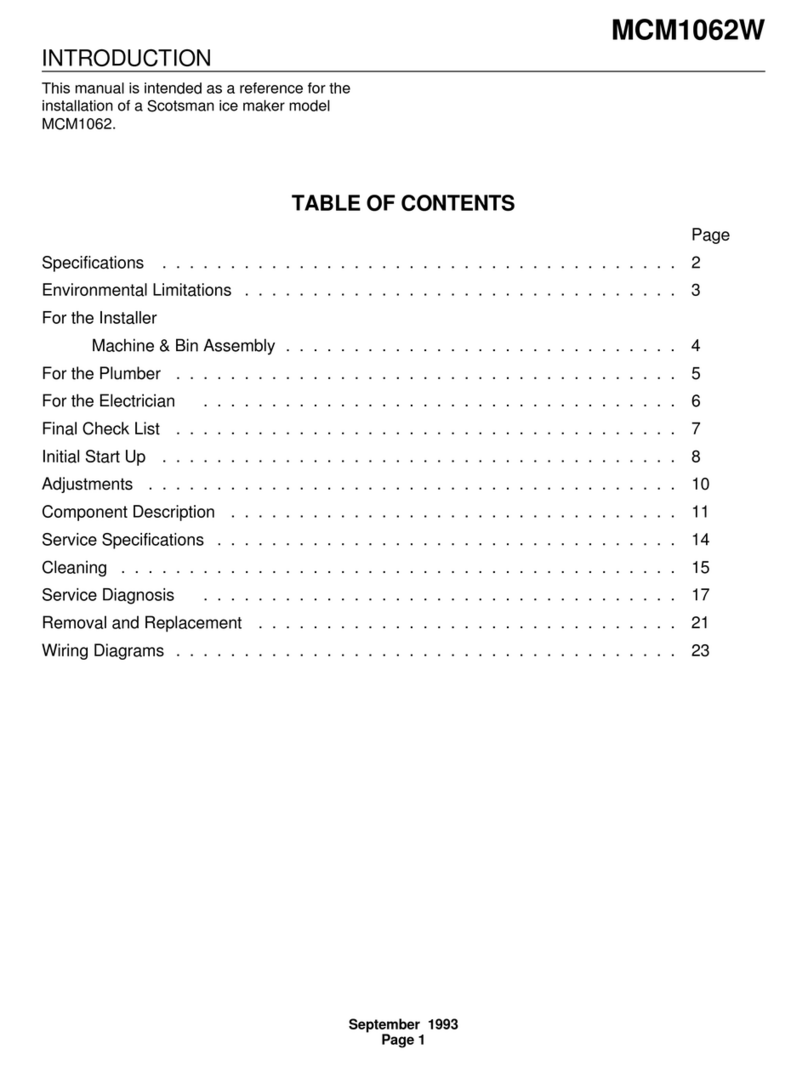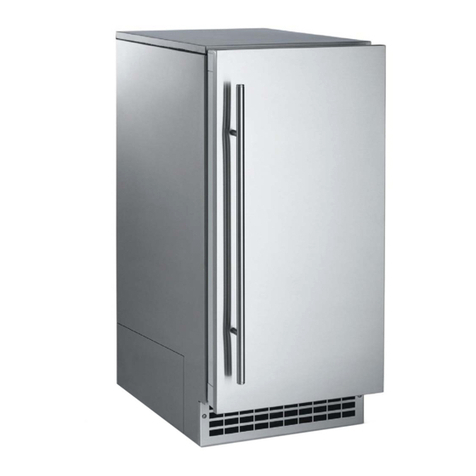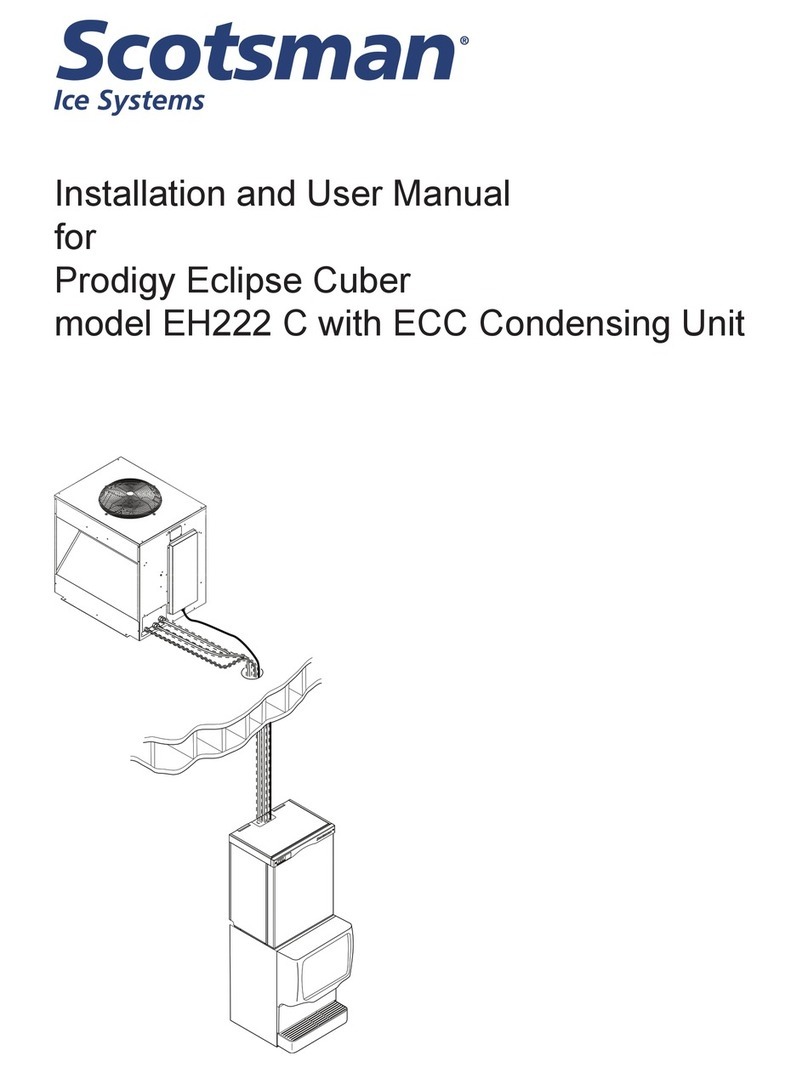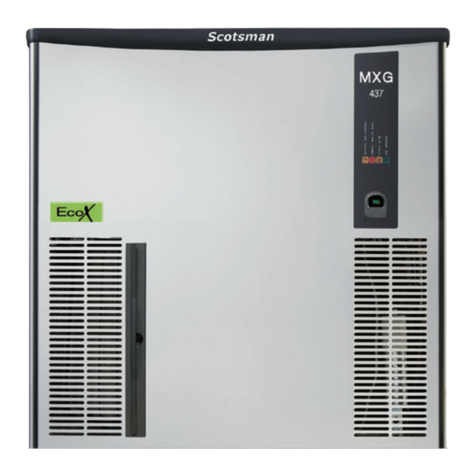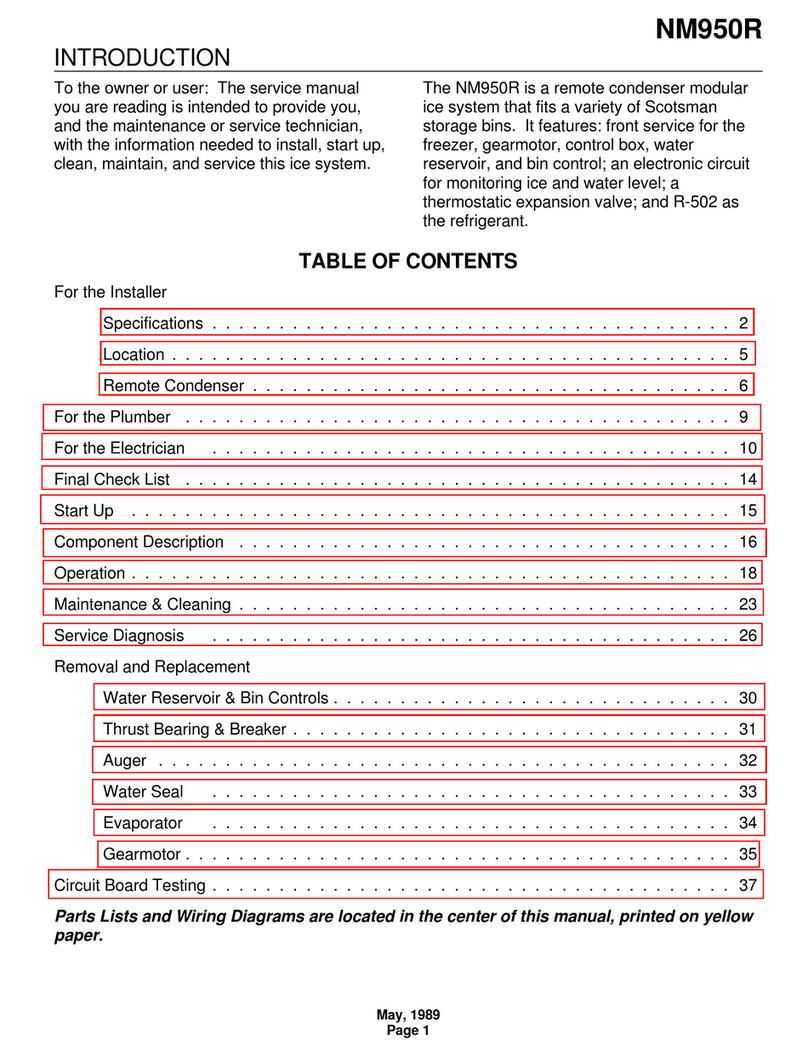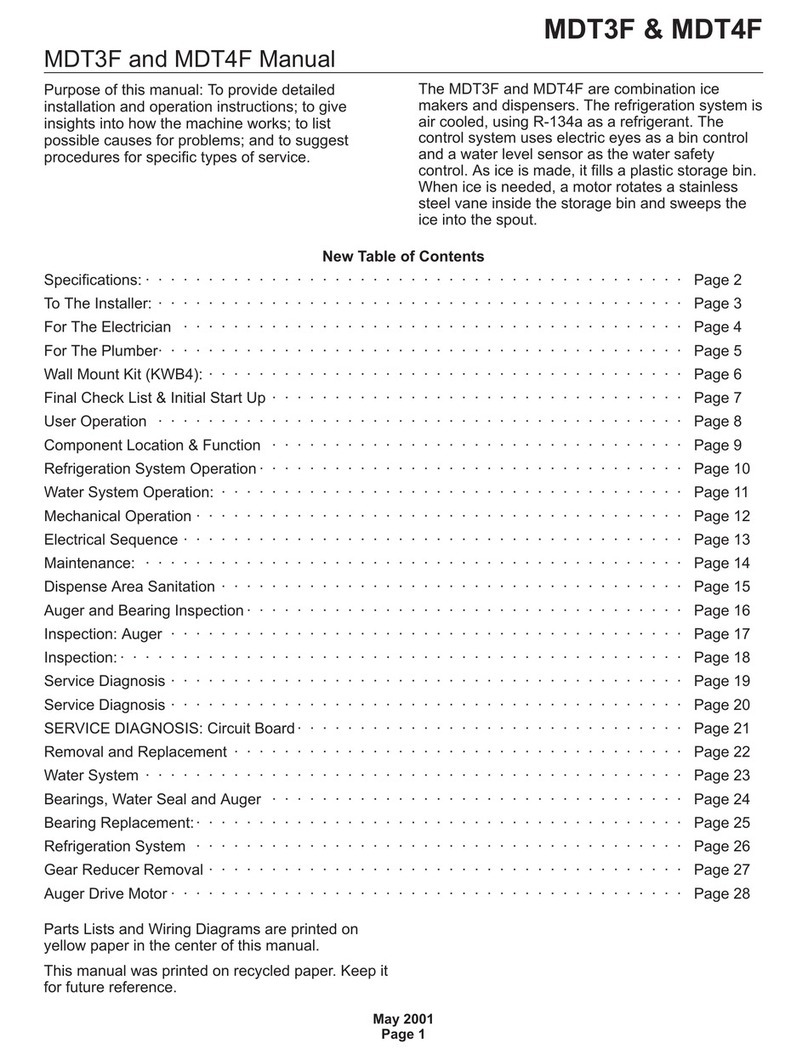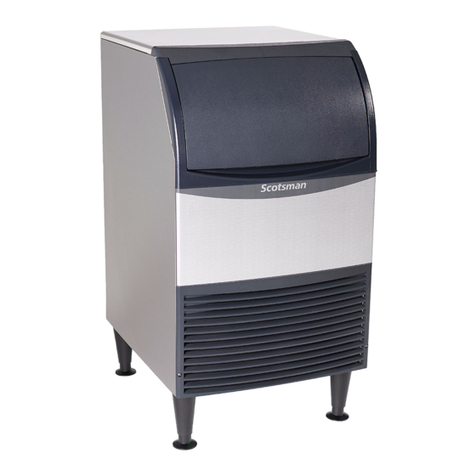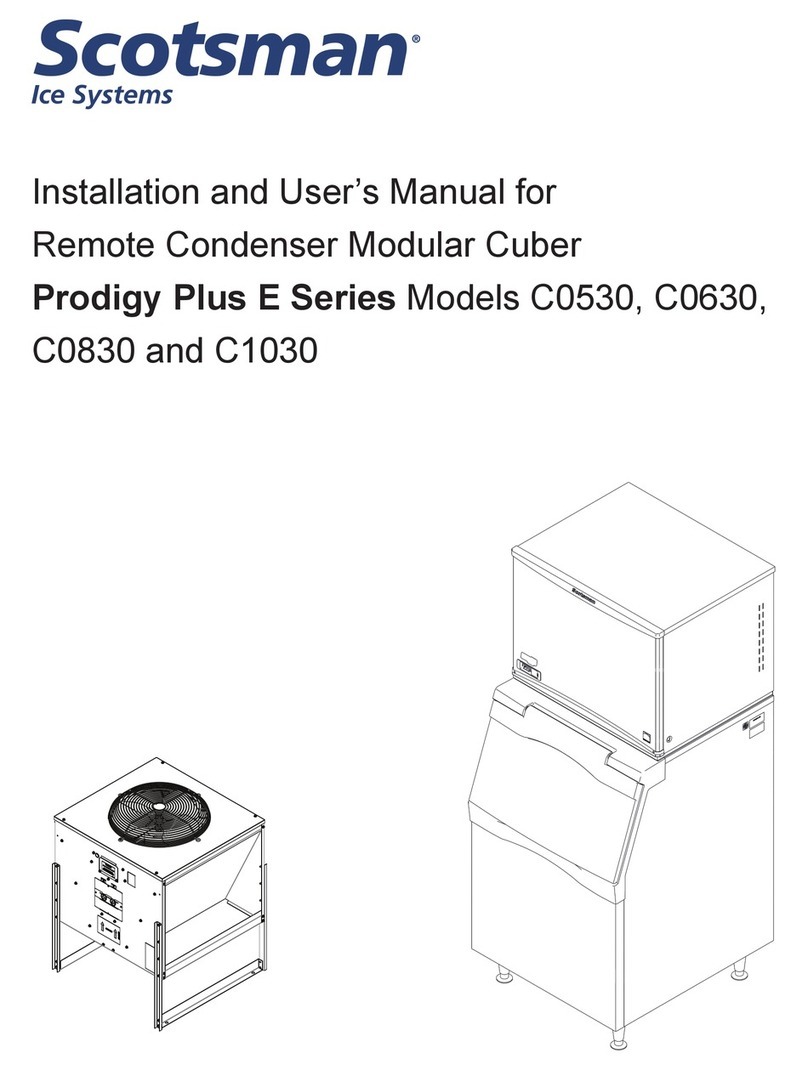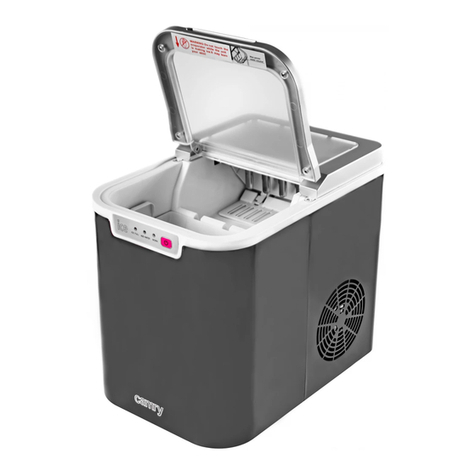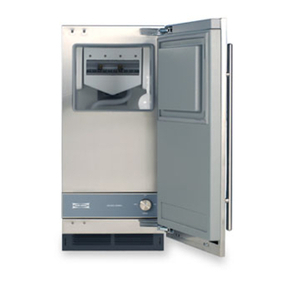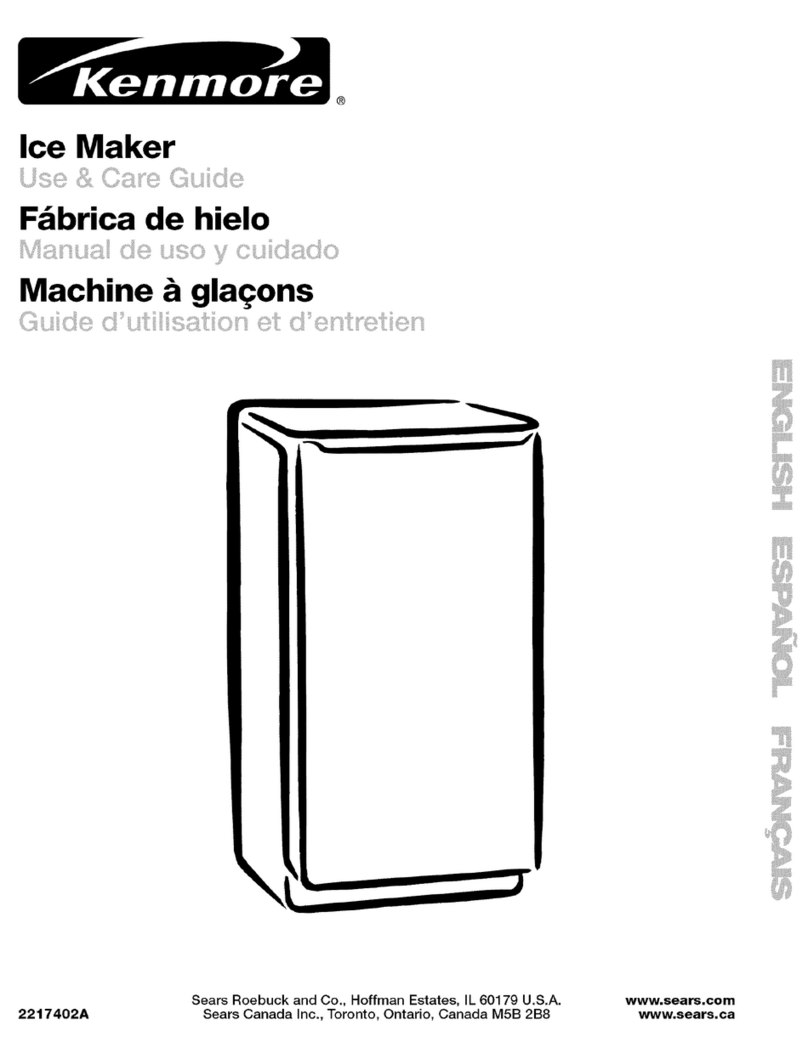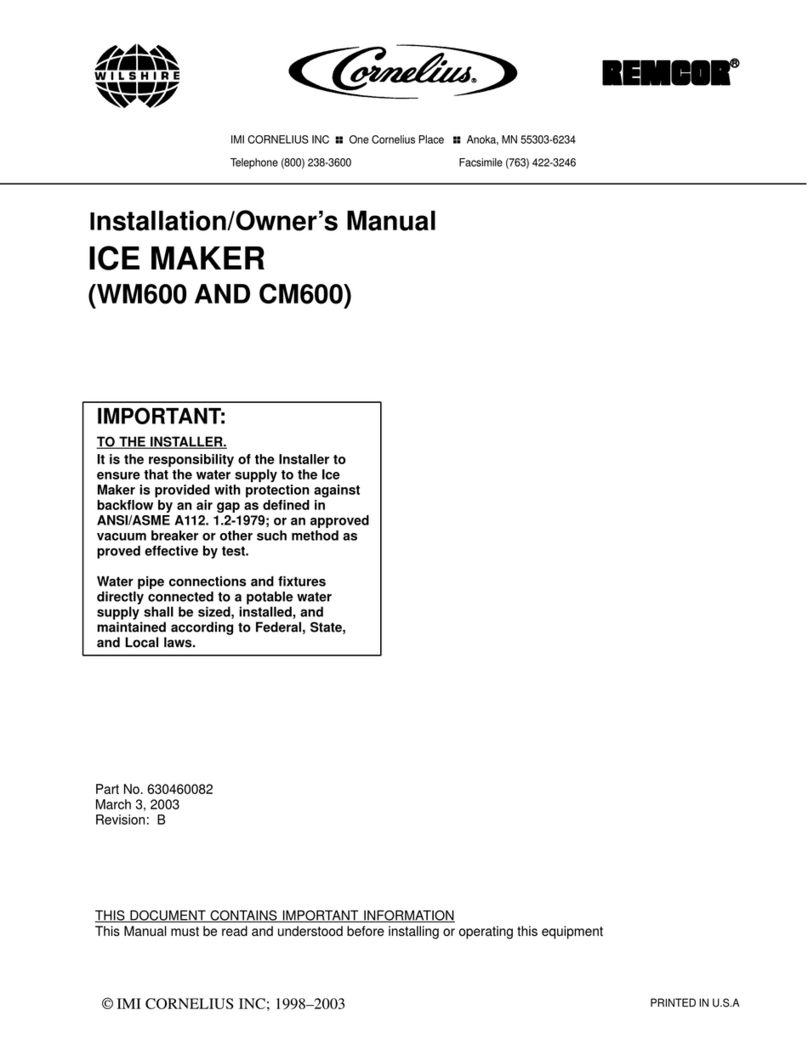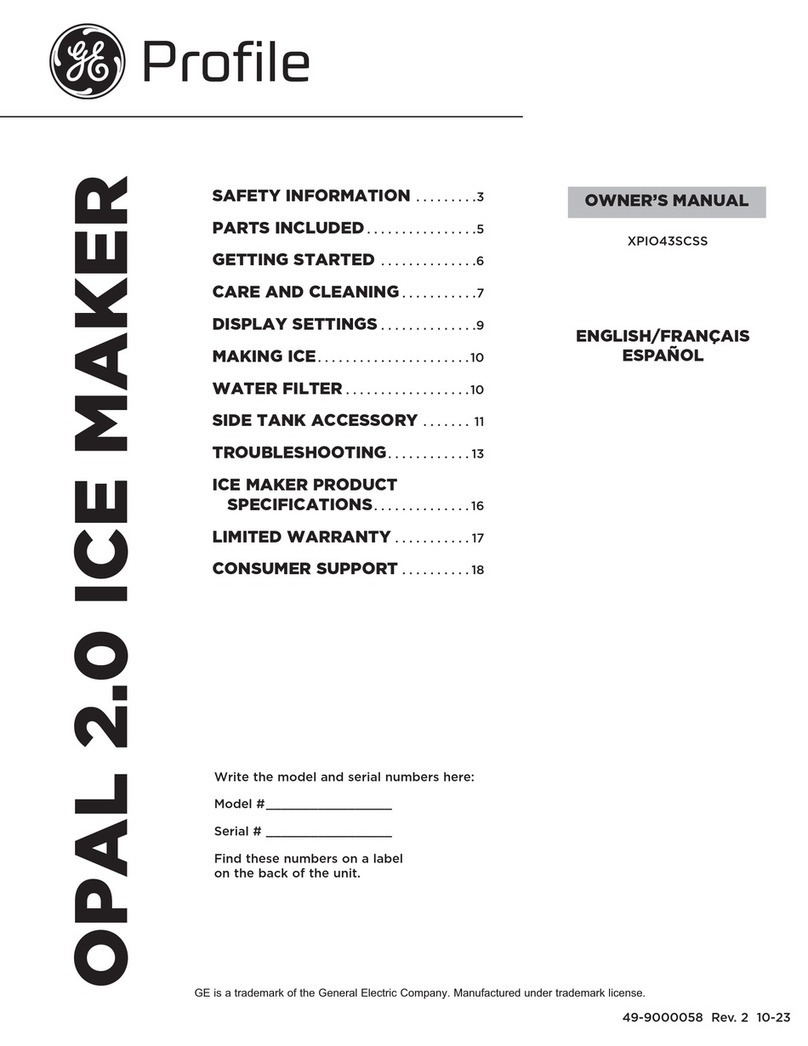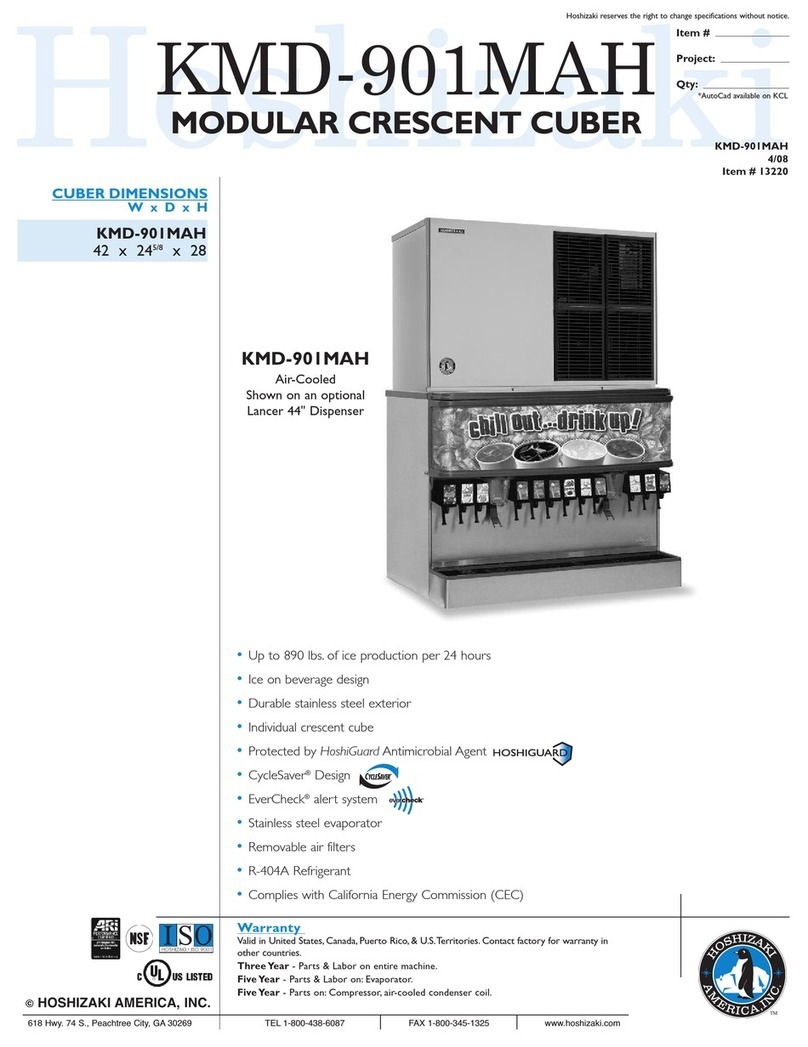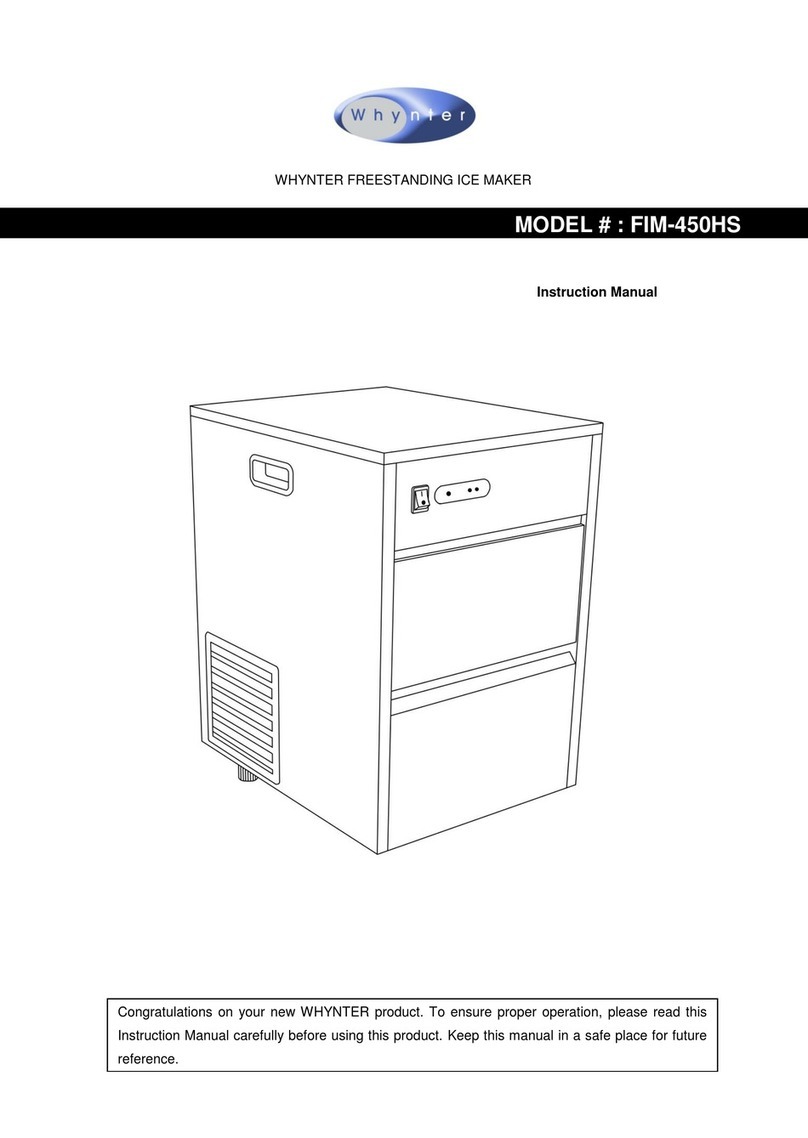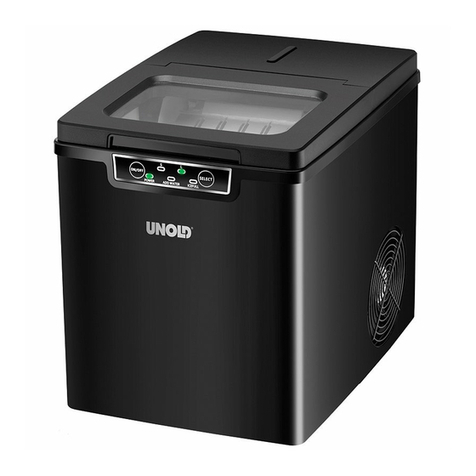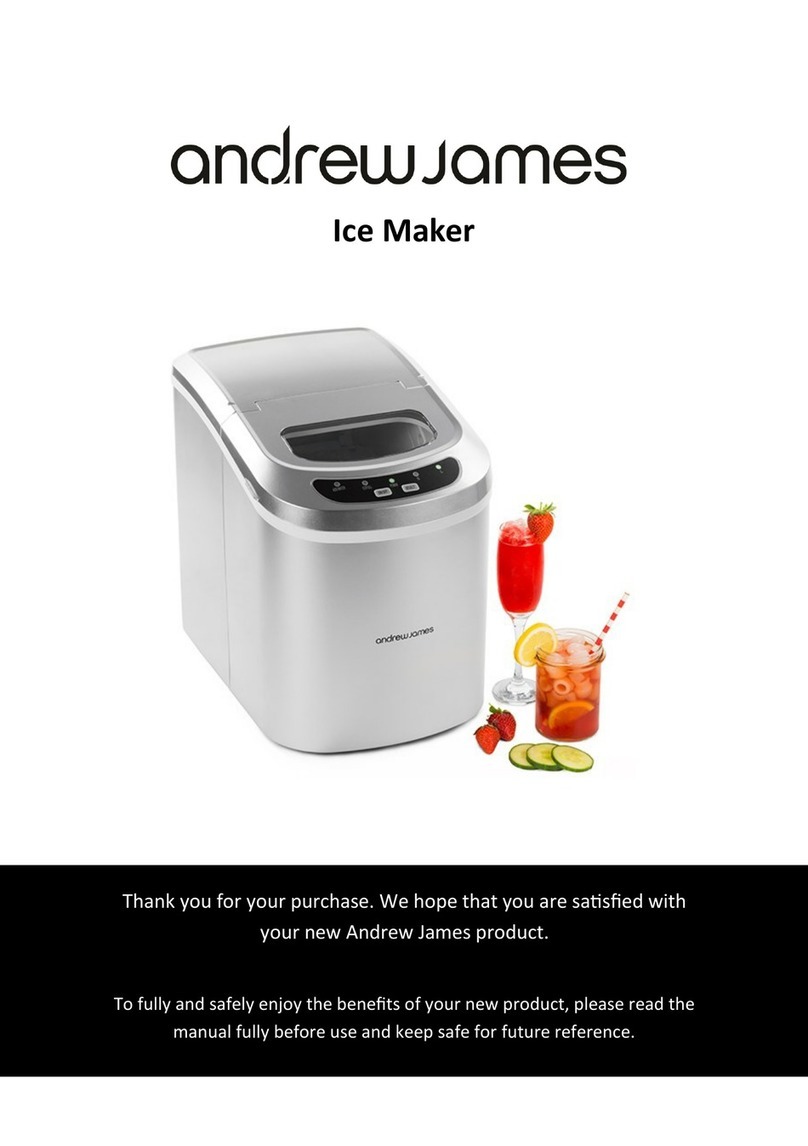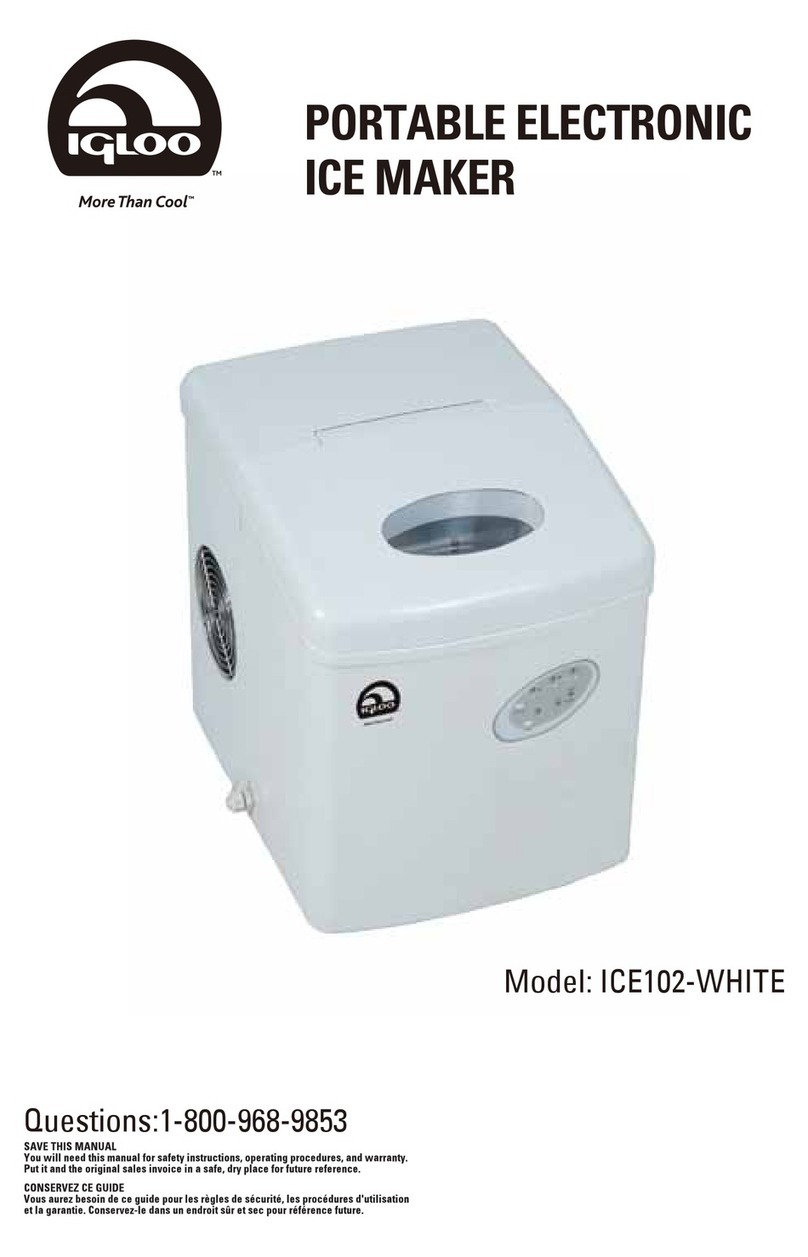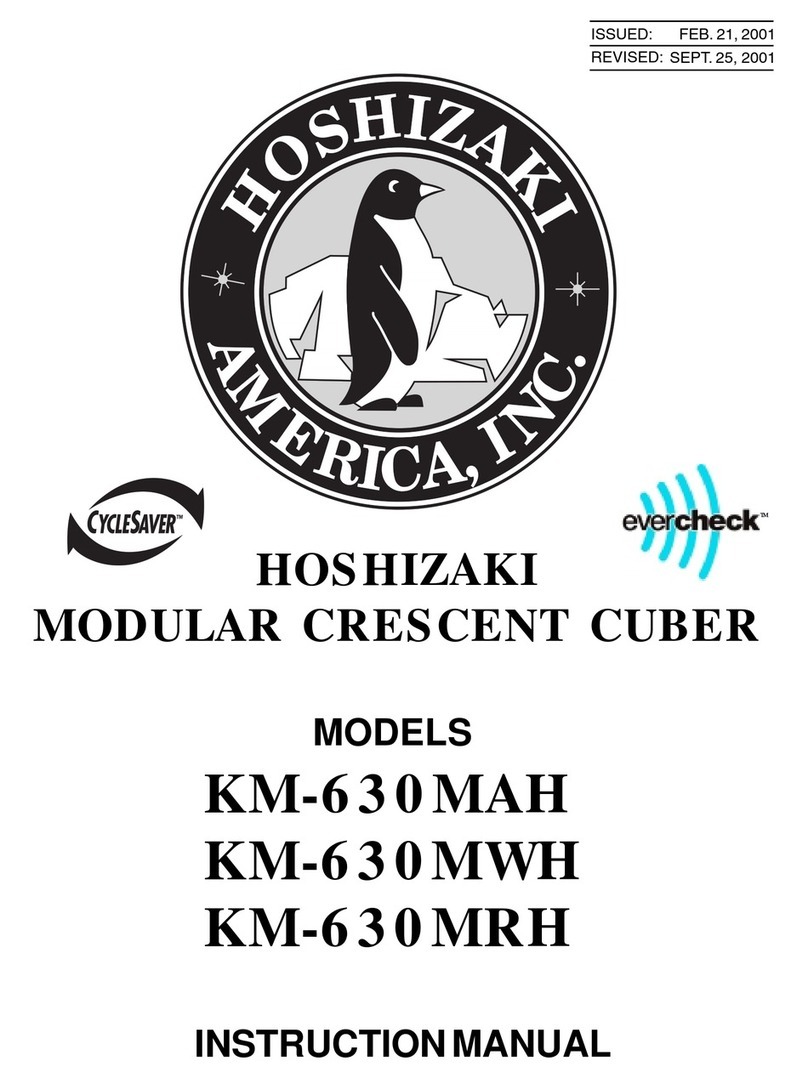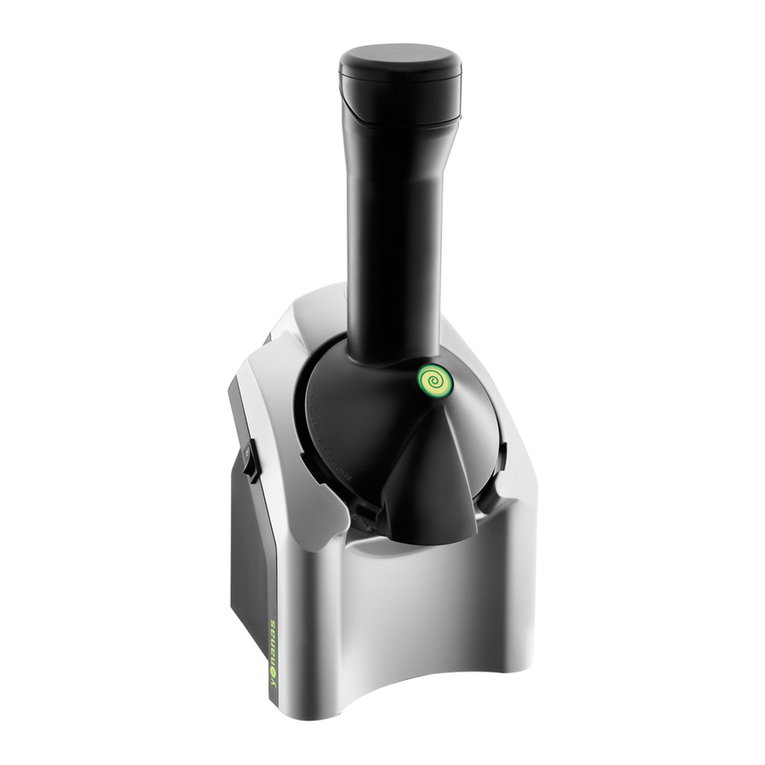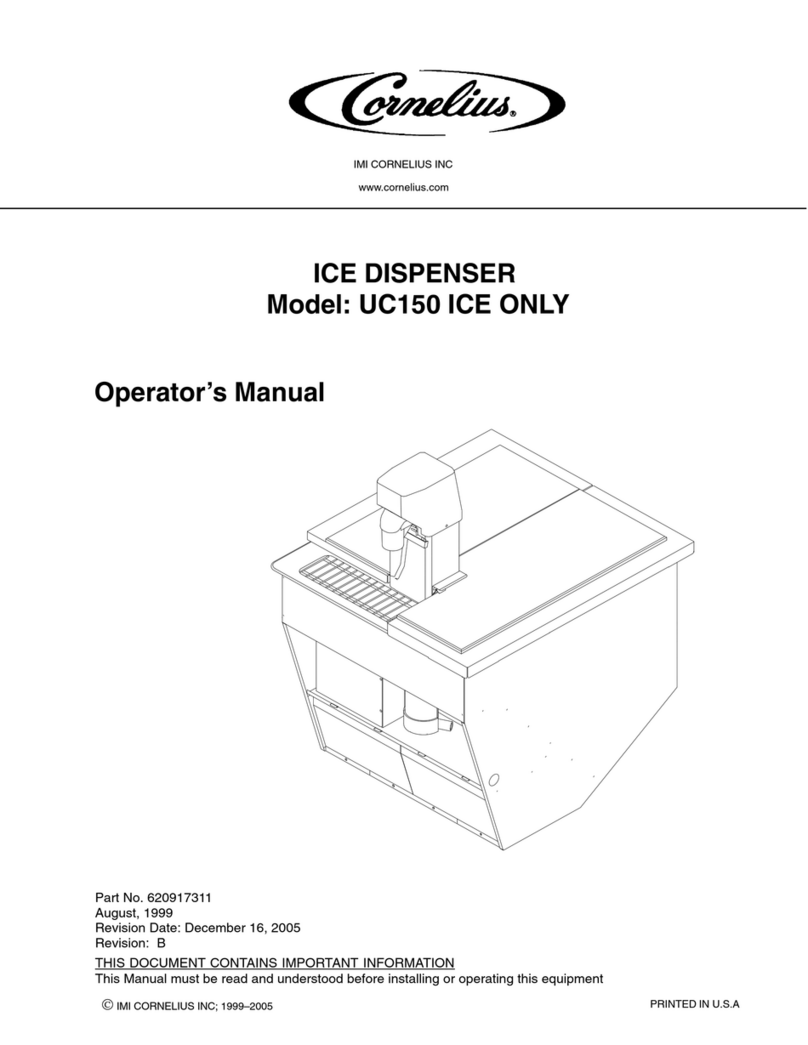
FS2330L
Remote Low Side Service Manual
December 2022
Page 9
Final Check List
After connections:
1. Wash out the bin. If desired, the interior of the bin
could be sanitized.
2. Locate the ice scoop (if supplied) and have it
available for use when needed.
3. Remote only: Switch on the electrical power to
warm up the compressor. Do not start the machine
for 4 hours.
Final Check List:
1. Is the unit located indoors in a controlled
environment?
2. Has the correct electrical power been supplied to
the machine?
3. Have all the water supply connections been
made?
4. Have all the drain connections been made?
5. Has the unit been leveled?
6. Have all unpacking materials and tape been
removed?
7. Has the protective covering on the exterior panels
been removed?
8. Is the water pressure adequate?
9. Have the drain connections been checked for
leaks?
10. Has the bin interior been wiped clean or sanitized?
11. Have any water lter cartridges been replaced?
12. Have all required kits and adapters been properly
installed?
13. Has the ice machine been properly connected to
the condensing unit or rack?
Control and Machine Operation
Once started, the ice machine will automatically make
ice until the bin or dispenser is full of ice. When ice
level drops, the ice machine will resume making ice.
Caution: Do not place anything on top of the ice
machine, including the ice scoop. Debris and moisture
from objects on top of the machine can work their way
into the cabinet and cause serious damage. Damage
caused by foreign material is not covered by warranty.
There are four indicator lights at the front of the
machine that provide information on the condition of
the machine: Power, Status, Water, De-scale &
Sanitize.
Power
Status
No Water
Time to Clean
On
O
Note: If the De-Scale & Sanitize light is ON, following
the cleaning process will clear the light for another
cleaning time internal.
Two button switches are at the front – On and O. To
switch the machine OFF, push and release the O
button. The machine will shut o at the end of the next
cycle. To switch the machine ON, push and release
the On button. The machine will go through a start up
process and then resume ice making.
Lower Light and Switch Panel
This user accessible panel provides important
operational information and duplicates the lights and
switches on the controller. It also allows access to the
On and O buttons that operate the ice machine.
Sometimes access to the switches should be limited
to prevent unauthorized operation. For that purpose a
xed panel is shipped in the hardware package. The
xed panel cannot be opened.
To install the xed panel:
1. Remove the front panel and remove the bezel.
2. Spread the bezel frame open and remove original
door, insert xed panel into bezel. Be sure it is in
the closed position.
3. Return bezel to panel and install panel on unit.
